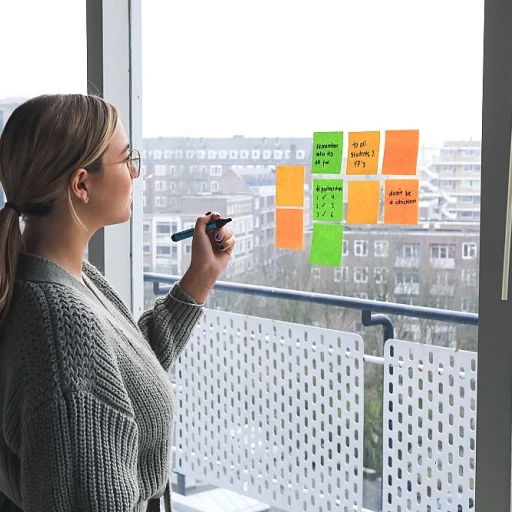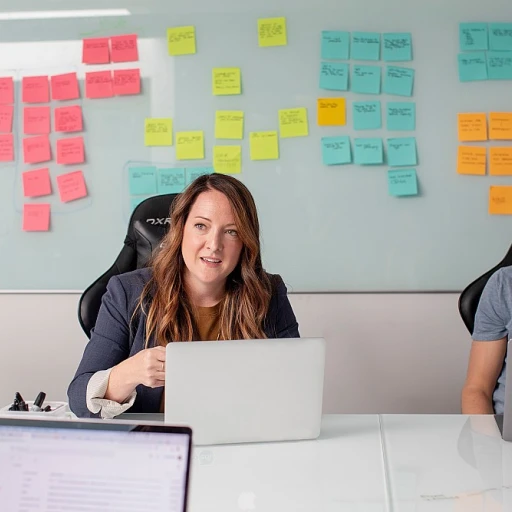The Rise of Remote Work and Its Impact
Remote Work: A Transformational Shift
The landscape of employee engagement has undergone a significant transformation with the rise of remote work. This shift has changed how businesses operate and how employees interact with their colleagues and engage with their work.
Remote work has brought about several challenges and opportunities:
- Flexibility and autonomy: Employees enjoy the flexibility to work from anywhere, which can lead to increased job satisfaction and a sense of empowerment.
- Communication challenges: Maintaining clear and effective communication can be more difficult when teams are not physically together, impacting collaboration and team cohesion.
- Work-life balance: It can be difficult for employees to establish boundaries between work and personal life, which can lead to burnout if not managed properly.
Businesses are exploring innovative ways to enhance engagement in this new work environment. Engaging millennials in the workforce has become a focal point, as they often prioritize remote work options. To address the challenges, companies are adopting flexible work arrangements, a topic we'll delve into further as it continues to be a game changer in fostering employee engagement.
Flexible Work Arrangements: A Game Changer
Adapting to New Work Styles
Flexible work arrangements have emerged as a vital element for organizations aiming to keep employees engaged. The conventional 9-to-5 workday is increasingly being replaced by more adaptable options like remote work, which have a notable impact on worker satisfaction and productivity. Employees value the autonomy offered by flexible schedules, resulting in a healthier work-life balance. This shift elevates engagement levels, as individuals feel empowered to manage their work in a way that suits their personal lives.To further explore how flexible arrangements impact workplace satisfaction, check out tips on boosting employee engagement for stellar performance.
Harnessing Employee Opinions
One of the most potent tools in enhancing employee engagement is actively seeking and utilizing employee feedback. This feedback can provide invaluable insights into the workplace experience and identify areas that need improvement. Employee opinions often hold the secret to shaping a more engaging environment. By creating channels where feedback is not only sought but also acted upon, companies can foster a culture of open communication and continuous improvement. Responsive action can be the determining factor in making employees feel heard and valued, thus boosting their overall engagement.Supporting Mental and Physical Health
Organizations are increasingly recognizing the importance of mental health and wellness programs as a foundational aspect of employee engagement. Initiatives that focus on both mental and physical health support workers in achieving a holistic sense of well-being, which in turn enhances their ability to engage fully in their work roles. Companies offering resources such as counseling services, meditation sessions, or fitness programs demonstrate their commitment to their employees' health. This dedication can drastically improve morale and foster a loyal, motivated workforce.Employee Feedback: The Secret Sauce
The Power of Open Communication
In today's rapidly evolving workplace, open communication channels have become crucial for maintaining high levels of employee engagement. Companies are realizing the importance of fostering a culture where employees feel heard and valued. Encouraging employees to share their thoughts and suggestions can lead to a more engaged workforce.Embracing Constructive Feedback
One of the most effective ways to boost employee engagement is through regular and constructive feedback. Employees crave opportunities for growth and development, and feedback plays a critical role in helping them achieve their career goals. By providing timely and specific feedback, employers can create a supportive environment that encourages continuous improvement.Implementing Feedback Mechanisms
Feedback isn't just about one-on-one conversations between managers and employees. Organizations are increasingly leveraging technology to gather insights from their workforce. Tools such as pulse surveys and feedback platforms are being utilized to collect and analyze employee sentiment, allowing for more data-driven decision-making. For more insights on crafting an effective employee engagement plan, consider exploring this resource.Creating a Feedback-Driven Culture
Building a culture that thrives on feedback requires effort and commitment from all levels of the organization. Leaders must lead by example and demonstrate their willingness to listen and act on employee input. When employees see their feedback leading to tangible changes, it reinforces their engagement and commitment to the organization. Open communication and effective feedback are transformative elements in employee engagement. By adopting these practices, companies can cultivate a more inclusive and engaged work environment that drives success and growth.Mental Health and Wellness Programs
Caring for Employee Well-Being Like Never Before
In recent times, there's been a heightened awareness of the importance of mental health and wellness programs within the workplace. Employers are increasingly recognizing that supporting the mental well-being of their teams is crucial not just for individual employees, but for the overall health and productivity of the organization. Employee engagement is significantly boosted when there is a supportive environment that prioritizes mental health. Gone are the days when a one-size-fits-all approach was employed. Now, companies are implementing a variety of strategies to cater to the diverse needs of their workforce. Some popular initiatives include:- Flexible Mental Health Days: Offering days off specifically for mental health can help employees recharge and return to work feeling refreshed.
- Counseling Services: Providing access to professional counseling can assist employees in managing stress and preventing burnout.
- Wellness Workshops and Programs: These can range from mindfulness and meditation sessions to fitness challenges and nutrition guidance.
Diversity, Equity, and Inclusion: More Than Just Buzzwords
Creating Inclusive Workplaces
In today's dynamic work environment, prioritizing diversity, equity, and inclusion (DEI) has become more than just a trend—it's a cornerstone for fostering employee engagement. Companies have realized that embracing diverse perspectives not only enriches the culture but also drives innovation and growth.The Role of Inclusive Policies
Implementing inclusive policies is vital. This starts with recruitment practices that actively seek diverse talent and ensuring fair promotion pathways. Training programs that raise awareness and promote inclusivity can help create an environment where every employee feels valued and heard.Cultural Competence as a Driver
Promoting cultural competence within teams is essential. Encouraging open dialogues about diversity and providing platforms for employees to share their stories fosters understanding and empathy—key ingredients for engagement. It's through these conversations that companies can break down barriers and build stronger teams.Measuring Inclusion Initiatives
While implementing DEI strategies is crucial, so is measuring their effectiveness. Regular feedback sessions and surveys help capture the employees' sentiments and provide insights for continuous improvement. Utilizing metrics to evaluate progress ensures that inclusion efforts are genuine and impactful. Ultimately, diversity, equity, and inclusion should be deeply rooted in the organization’s ethos. It's a continuous journey that requires commitment and active participation from all levels of the workforce to truly enhance engagement and create thriving workplaces.Learning and Development: Investing in the Future
Continuous Learning: A Path to Employee Satisfaction
In today's rapidly evolving work environment, continuous learning and development have become crucial for maintaining employee engagement. As organizations embrace the rise of remote work and flexible arrangements, providing opportunities for skill enhancement is more important than ever.
Employees crave growth and want to feel that their careers are progressing. By investing in learning and development programs, companies can not only enhance their workforce's skill set but also boost morale and job satisfaction. This investment reflects a commitment to employees' future, fostering a sense of loyalty and motivation.
Tailored Development Programs
To maximize the impact of learning initiatives, it's essential to tailor programs to meet individual needs. Personalized learning paths can address specific skill gaps and align with personal career goals, making employees feel valued and understood. This personalized approach can significantly enhance engagement levels.
Embracing Technology for Learning
Technology plays a pivotal role in modern learning and development strategies. Online courses, webinars, and virtual workshops offer flexible and accessible options for employees to learn at their own pace. By leveraging technology, companies can ensure that their workforce remains competitive and adaptable in a changing landscape.
In conclusion, investing in learning and development is not just about improving skills—it's about nurturing a motivated and engaged workforce ready to tackle future challenges. As part of a broader strategy that includes feedback mechanisms and wellness programs, it can significantly enhance overall employee engagement.












